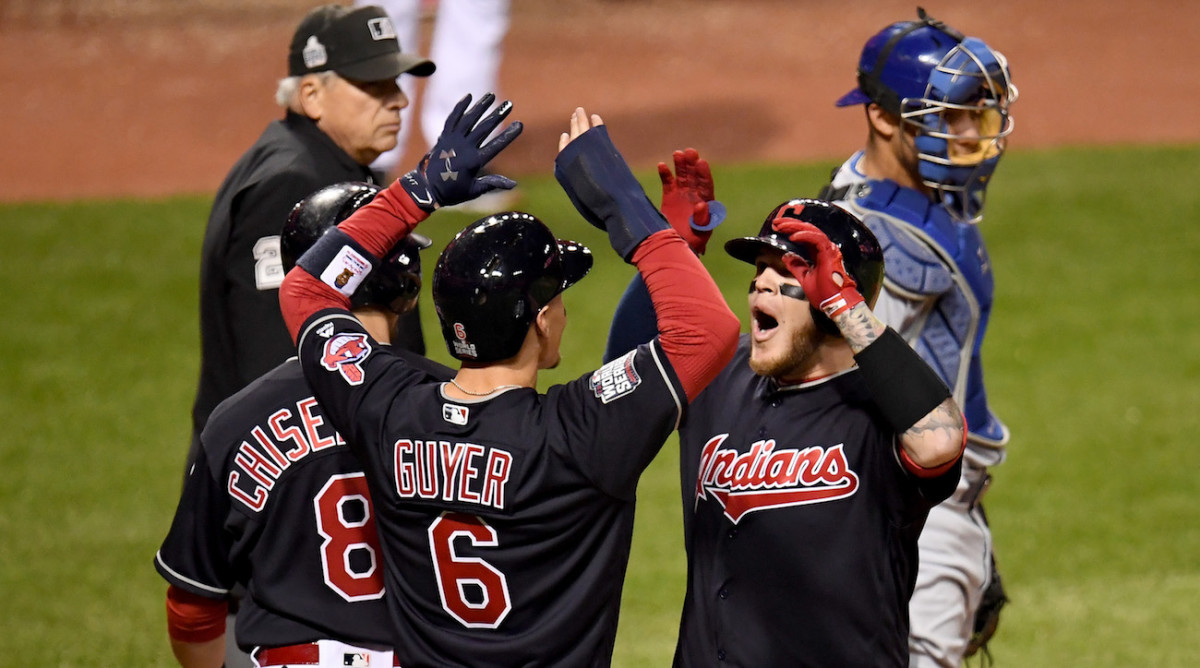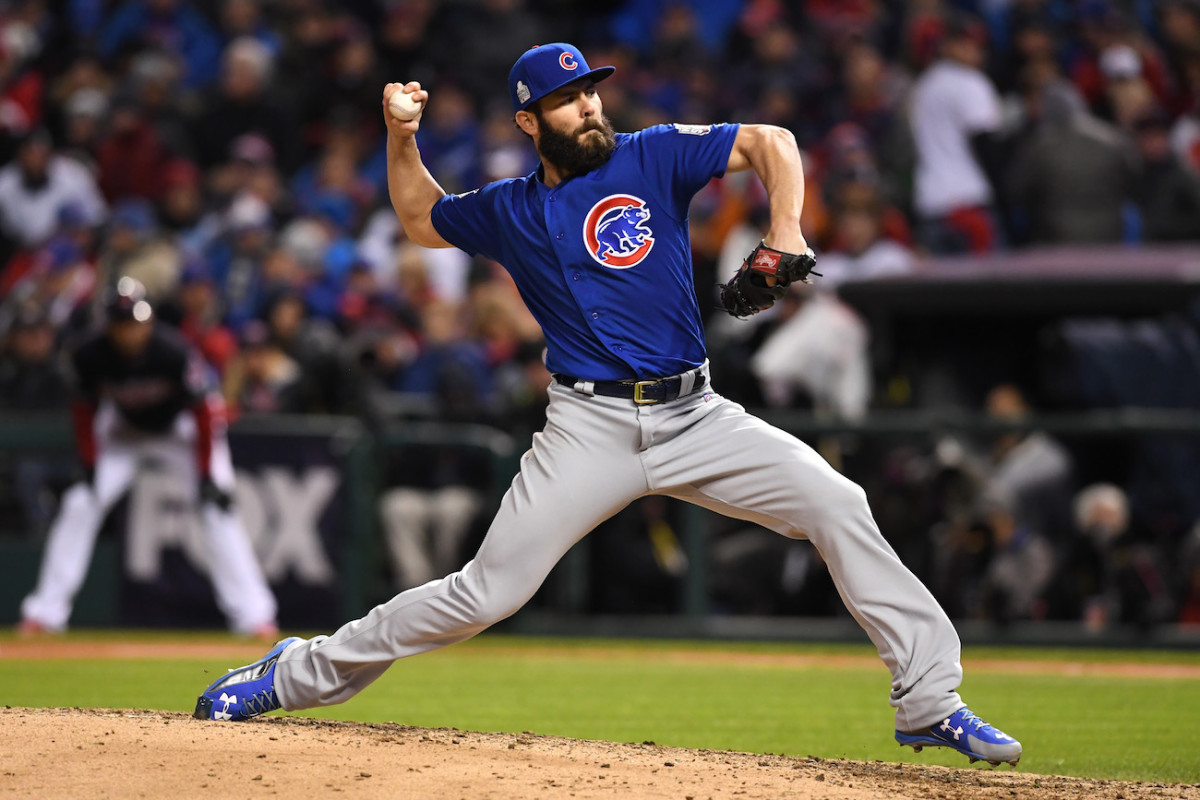World Series Game 3 Has Historic Implications


The Duel of the Droughts is off to a rousing start after Cleveland and Chicago split the first two games of the World Series. Although not thrilling, the two games showcased each team’s strengths and set the tone for what figures to be a back-and-forth Fall Classic.
First, Game 1: The hotly anticipated main event of the most important day in the history of Cleveland sports could not have opened better for the home team. After Corey Kluber fanned Dexter Fowler and Kris Bryant in the top half of the first, the Indians saw their first two hitters, Rajai Davis and Jason Kipnis, strike out and line out. Cleveland then displayed the small-ball tactics that had propelled it to the pennant.
Francisco Lindor singled to center for the Tribe’s first hit of the game and stole second as the Tribe’s running game heated up against Jon Lester, who very rarely attempts pickoffs. A rattled Lester issued free passes to Carlos Santana and Mike Napoli. With fans already holding their breaths five outs into the Series, Jose Ramirez poked an infield single to put Cleveland up 1–0. Brandon Guyer was hit by a pitch shortly thereafter, and the Tribe found themselves up 2–0, just like that.
Things would only get better as Kluber settled in, and the Cy Young candidate reached historic levels as he punched out eight in three innings to set a World Series record. The pivotal moment of the game, however, came after Kluber left.
Andrew Miller, the ALCS MVP, inherited a runner from Kluber and at first only dug himself into a deeper hole. Miller walked Kyle Schwarber and surrendered a single to Javier Baez, loading the bases with nobody out. But Miller demonstrated his prowess by enticing Willson Contreras to fly out and striking out Addison Russell and David Ross.
Cleveland cruised from there, as Miller and Cody Allen silenced the Cubbies while Roberto Perez bashed his second homer of the night, putting the icing on a 6–0 victory.
It was an entirely different story a day later. This time, Chicago was firing on all cylinders. The team spaced out its scoring with tallies in the first, third, and fifth. Starring for the Cubs was Kyle Schwarber, a man who played a grand total of zero games in the regular season. Schwarber’s RBI single in the third inning directly contributed to the exit of Bauer in the Chicago fourth.
On the mound, Jake Arrieta was truly magnificent. The Cubs hurler, the only man to throw a no-hitter this season, came relatively close to another, allowing nary a hit until Jason Kipnis’ double in the sixth. Like Kluber a night before, Arrieta, too, was lifted after a six-inning masterpiece.

Game 3 will be a seminal moment in baseball history as Wrigley Field hosts its first World Series game since October 10, 1945. It also has the potential to swing the Series. If the Cubs win, Chicago will border on delirium, for the Cubs will have a realistic shot at ending the most famous curse in American sports.
Should the Indians win, Cleveland’s second sports championship in a year will be two wins away, albeit two wins at Wrigley Field.
All that stands between the two teams and a 2–1 Series lead is Josh Tomlin and Kyle Hendricks. This has been a Series in which good hitting has followed good pitching, with the Tribe’s and Cubbies’ offenses feeding off positive energy from Kluber’s and Arrieta’s performances. Tomlin and Hendricks will have to star if any championship dreams for the Indians or Cubs are to be realized.
Game 4 will pit Kluber, on short rest, and John Lackey. Beyond that, little is known. Midwestern weather hovering in the forties could wind up having a significant effect on the two teams’ game plans.
With the sports world watching, both teams will have to take their games to another level. Tomlin’s and Hendricks’ outings will have to be stellar. The winner has the potential to be remembered as a key cog in his team’s title run, only adding to the stakes of one of the most critical games in both franchises’ histories.
Photographs by Jason Miller/Getty Images (2)
